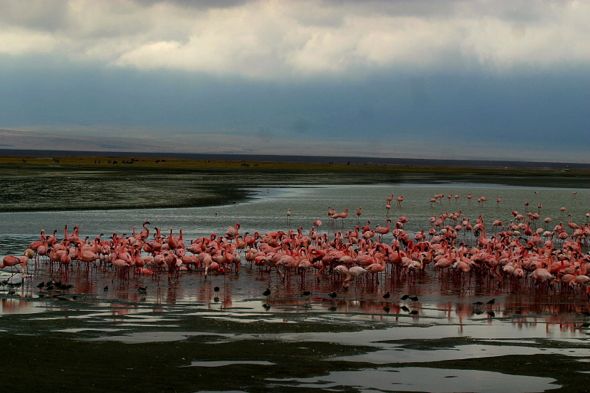Yes, monogamous birds do divorce their partner. Divorce here occurs when the pair bond is broken when one of the pair decides to leave. Another cause can be when a usurper chases off one of the pair and develop a bond with the other.
Among monogamous LINK birds that pair for one season, divorces usually occur between seasons. Among migratory species, the late arrival of a mate to the breeding grounds may result in divorce, as waiting for the mate to appear may result in missing out on the breeding season. In such a case the female may take on a male of a higher social rank or one with a better breeding territory than that of her previous partner.
Within-season divorces, also referred to as rapid mate switching, are less common than between season divorces. Again, the reasons may either be abandonment by one of the pair of forced out by a usurper.
There is a general belief that females more often initiate divorce than males. And in such instances, she is more likely to have had mixed-paternity broods prior to the divorce than females who stay with their previous partners.
Examples of divorces among birds include Greater Flamingo (Phoenicopterus rubber roseus) (top: flamingoes in a lake in Kenya, Africa), Common Blue Tits (Cyanistes caeruleus), Black-capped Chickadees (Parus atricapillus) and Eurasian Oystercatcher (Haematopus ostralegus), among others.
YC Wee
Singapore
November 2013
References:
1. Cezilly F. & A. R. Johnson, 1995. Re-mating between and within breeding seasons in the greater flamingo Phoenicopterus rubber roseus. Ibis 137, 543–546.
2. Choudhury, S., 1995. Divorce in birds: a review of the hypotheses. Animal Behaviour, 50 (2), 413-429.
3. Ens, B. J., U. N. Safriel & M. P. Harris, 1993. Divorce in the long-lived and monogamous oystercatcher, Haematopus ostralegus: incompatibility or choosing the better option? Animal Behaviour, 45(6), 1199-1217.
4. Jacot, A., M. Valcu & B. Kempenaers, 2010. Within-season divorce in Blue Tits (Cyanistes caeruleus). Journal of Ornithology, 151, 477-482.
5. Ramsay, S. M., K. A. Otter, D. J. Mennill, L. M. Ratcliffe & P. T. Boag, 2000. Divorce and extrapair mating in female black-capped chickadees (Parus atricapillus): separate strategies with a common target. Behav. Ecol. Sociobiol., 49 (18), 18-23.









